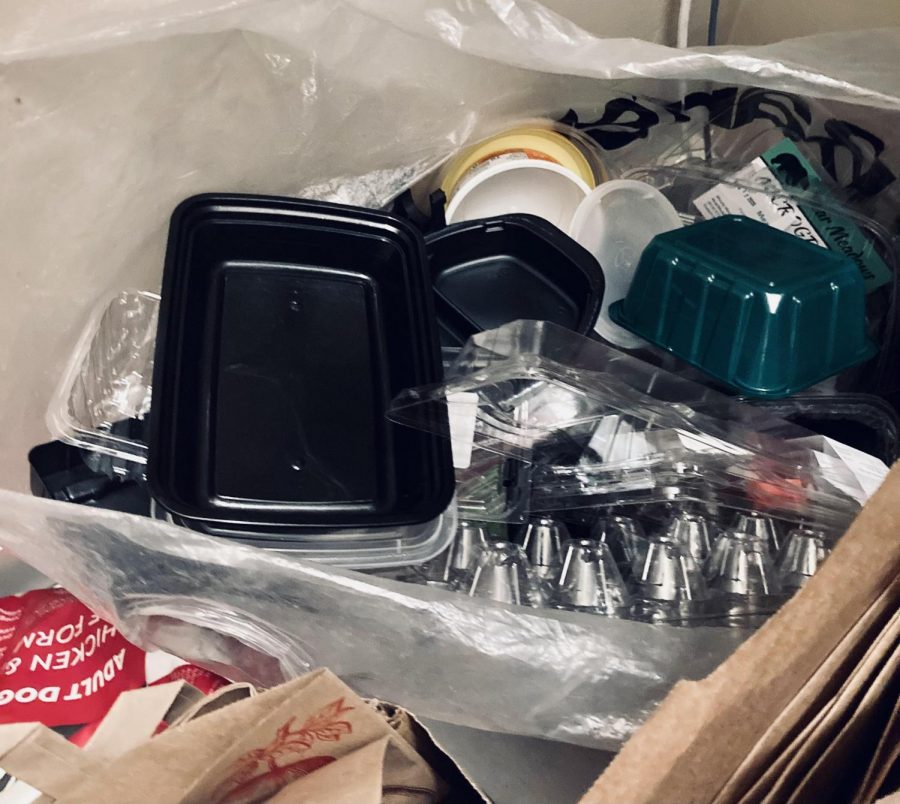Reuse, Reduce, But Do We Recycle?
A bag full of plastics 3-7, the kind that can’t be recycled regularly, is waiting to be taken to a recycling center where it may or may not be recycled.
September 28, 2020
All our lives, we have been told to recycle. Even as little kids, we knew to put plastics, paper, cans, and glass in the blue bins. We knew the symbol, but we never really knew where it went. What if that was all a lie? With new information surfacing, plastic recycling might have been revealed as a marketing trick from the 1980s.
The 2020 NPR article How Big Oil Misled the Public Into Believing Plastic Would Be Recycled by Laura Sullivan detailed the idea that not all plastics are being recycled. In the 80s, oil companies began promoting the idea of plastic recycling. This made people feel better about buying more new plastic, leading to plastic-producing companies making more money. They promoted the national recycling symbol, which was quickly added to all kinds of plastics, paper, metal, and glass. It appeared that all the plastic was being recycled when in reality, that wasn’t what was happening.
There are seven kinds of plastic that make up all single-use plastic, which are categorized into different numbers. Most people have no idea about the different kinds of plastics, where they go, and what they mean. Sophomore Anna Winey confirmed this.
“I don’t really know that much about plastics or what kinds there are [but] yeah we do recycle at home,” Winey said.
Some plastics types, for example, one and two, can be regularly recycled and turned into new plastic, whereas others need to be taken to special recycling centers.
“In my house we have recycling but they don’t take all of our plastics, so we take some to a special place but I’m not sure which kind [we take to the recycling center],” sophomore Joe Peters said.
Recycling can become expensive for companies, meaning that most plastic isn’t being recycled, just thrown in oceans and landfills. Even with the confusions these students had, they still were shocked after learning about what these companies have done. Both Peters and Winey were surprised to learn about how these companies lied, and both felt that they would continue to try really hard to recycle.
We need to limit our use of single-use plastic and inform others of the lies that these companies told. Products like yogurt cups, fruit packaging, and to-go containers are not reaching their end destination and only ending up in landfills.
There are better ways to buy these items without the use of plastic. Many farmers’ markets sell the same kinds of fruits that you can buy at the grocery store but without the plastics. They often come in compostable paper cartons. Farmers’ markets also support local farms and businesses. This solves the problem of buying less single-use plastic, but that doesn’t stop companies from making it. We need to use our voices to tell these companies to change their actions. We have to be the ones to stand up.
I was shocked to learn that recycling isn’t all we thought and that most plastics never make it anywhere other than the ocean or landfills. Thinking about the amount of plastic we use in our day-to-day life is important. We have to take a stand now so that the lies these companies have told will stop. Though we still have benches made of bags and fleeces made of bottles, the dream of recycling isn’t all we thought it was.


